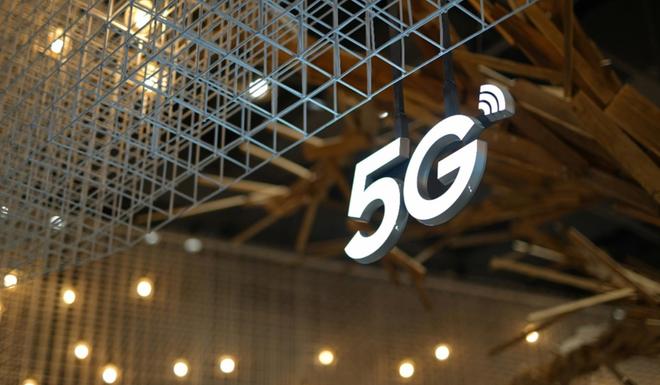Published 22:01 IST, July 16th 2024
5G Recent Advancements Set to Benefit Indian Online Businesses
And, since 5G offers significant benefits for various industry players, countries like India have welcomed it to share in its advantages.

As India looks forward to transforming its socio-economic landscape, it has been providing a conducive environment for spreading technologies like 5G. Of course, 5G is not new worldwide – it’s been around for about eight years now. And, since the technology offers significant benefits for various industry players, countries like India have welcomed it to share in its advantages.
In just 2023, the network’s availability improved from 28.1% in the first quarter to 52.0% in the last quarter. This came just after the country launched its first 5G network towards the end of 2022. Reading on, you will see how online businesses have been benefiting from this trend and how different stakeholders are uniting to encourage the further spread of the network.
Understanding the Benefits of 5G
Most probably, when you hear of 5G, the immediate thing that comes to mind is the speed it offers. Especially for industries like iGaming, the importance of speed can't be overemphasized. Game developers are now integrating advancements like HD visuals and graphics into their game offerings to enhance their competitiveness.
Consider online slots at Ignition, for instance. The tech improvements found in these games often require fast-loading internet speeds to guarantee seamless gameplay. Compared to 4G, 5G is about 100 times faster, enhancing the load times of such games.
While speed is important, things like autonomous vehicles and remote surgeries might need more than just that. You want to ensure your autonomous vehicle responds to commands nearly instantaneously. And this is what 5G can achieve. With its low latency, which can get to as low as 1 millisecond, the network enhances instant responses, which can be 250 times faster than human beings can react to visual stimuli.
Well, if you’re an analyst or an industry leader, there are more benefits to reap from this technology. Particularly for the IoT sector, 5G offers a fertile ground for development initiatives as it can deliver up to 1000 times more capacity than its predecessor. This ensures that up to hundreds or even thousands of devices can seamlessly communicate, which is a plus for wireless networks in factories, cities, homes and so on.
By combining faster speeds and increased network capacity, 5G boasts a greater potential for transferring larger amounts of data. It can be quite challenging for crowded stadiums, for instance, to offer smooth connectivity to large crowds. But with 5G, fans can livestream their favorite events from any seat within the venue. It’s not any different for businesses, more so those that deal with big data.
India is Coming Up Well
Just recently, India was mentioned as the 14th nation with the fastest 5G median download speeds across the world. This is thanks to Reliance Jio and Bharti Airtel’s continued commitment to deploy the network across the entire nation. Actually, by the end of 2023, these operators had deployed about four hundred thousand 5G base stations countrywide – a 7.7 times increase from the beginning of the year. According to Ericsson, over 130 million users had subscribed to the network by December 2023. Surprisingly, the number had increased by over ten times compared to that recorded at the close of 2022.
Even though both Reliance Jio and Bharti Airtel have invested heavily in distributing this network, Reliance is somehow ahead – it implemented 5G Standalone (5G SA) from the word go. On the contrary, Bharti Airtel started with a non-standalone framework, with plans to shift to 5G SA later. Gopal Vittal, the managing director and CEO at Airtel India, confirmed in early 2024 that they had plans to use 5G SA for fixed wireless access (FWA) as traffic continued to soar.
This move will likely pose more competition for Jio as the two companies seek to dominate the Indian Market. As the country faces increased demand for quality indoor connectivity amid low fixed broadband penetration, FWA will likely meet this market need, offering Airtel a competitive advantage.
A Call for Network Updates
With 5G services set to shift India’s economy, discussions around deploying optical fiber infrastructure have surfaced. However, such an infrastructure might need substantial investment – CXO Today approximated an amount of about Rs. 2.2 lakh crore. As a result, leading stakeholders such as Sterlite Technologies (STL) and Polycab have been drawing attention to this sector.
It's clear enough that the growing demand for 5G offers a life-changing opportunity for optical fiber cable manufacturers in the country. To establish a robust framework for 5G integration, EY and DIPA suggested that the country would need to invest about Rs. 59,000-93,000 crores to deploy fiber and microwave infrastructure by 2028. This is without mentioning that challenges like economic downturns and high costs of raw materials might pose hurdles.
To sum it up, India’s economy is set to reap enormous benefits from the spread of 5G. Despite the challenges that stand in the way of establishing a seamless 5G infrastructure, the commitment of key industry players will see the country making quantum leaps towards achieving its goals.
Updated 22:01 IST, July 16th 2024


